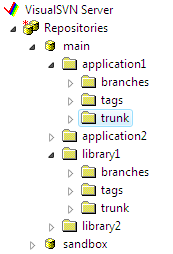The experience in resolving conflict in anksvn is not so nice. If you commit without get update and you can get a conflict message. If you get conflict message box, you can an update, after that svn will automatically merge your file with the latest version file in server. It also make change make copy copy of original working file and rename it as "*.mine", and get a copy of your original file (eg, *.r43), and a copy of the latest version (eg. *.r44) And this file is marked as "conflict". You can examine the merged file, and manually change whatever is necessary. After that you need to mark it as resolve, before commit. You have 4 choice.
- Resolve using working copy file, which the merged copy.
- Resolve using Orignal file, which is the *.r43 file
- Resolve using my file, which the working file before merge (*.mine)
- Resolve using their file, which is the *.r44 file.
